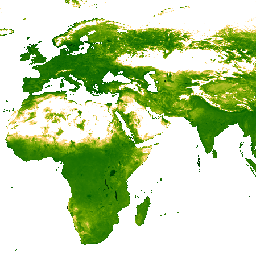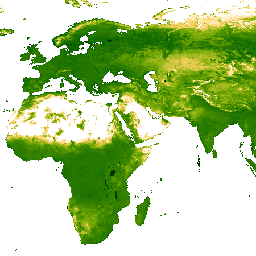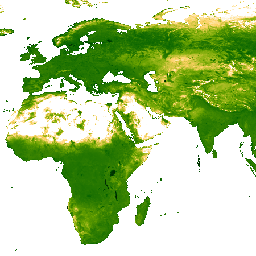AI-generated Key Takeaways
-
These datasets provide gap-filled Tasseled Cap Brightness (TCB) and Wetness (TCW) derived from MODIS BRDF-corrected imagery.
-
The tasseled-cap transformations are based on the equations defined in Lobser and Cohen (2007).
-
Gap-filling ensures data continuity by eliminating missing values caused by cloud cover, cloud shadows, and other factors using the method outlined in Weiss et al.(2014).
-
Both datasets are produced by the Malaria Atlas Project and are available at a 5km spatial resolution and monthly temporal resolution.
-
TCB: Malaria Atlas Project Gap-Filled Tasseled Cap Brightness (8-Daily 1km)

This gap-filled Tasseled Cap Brightness (TCB) dataset was created by applying the tasseled-cap equations defined in Lobser and Cohen (2007) to MODIS BRDF-corrected imagery (MCD43B4). The resulting data were gap-filled using the approach outlined in Weiss et al. (2014) to eliminate missing data caused by … brightness malariaatlasproject map publisher-dataset tasseled-cap tcb -
TCB: Malaria Atlas Project Gap-Filled Tasseled Cap Brightness (Annual 1km)

This gap-filled Tasseled Cap Brightness (TCB) dataset was created by applying the tasseled-cap equations defined in Lobser and Cohen (2007) to MODIS BRDF-corrected imagery (MCD43B4). The resulting data were gap-filled using the approach outlined in Weiss et al. (2014) to eliminate missing data caused by … brightness malariaatlasproject map publisher-dataset tasseled-cap tcb -
TCB: Malaria Atlas Project Gap-Filled Tasseled Cap Brightness (Monthly 1km)

This gap-filled Tasseled Cap Brightness (TCB) dataset was created by applying the tasseled-cap equations defined in Lobser and Cohen (2007) to MODIS BRDF-corrected imagery (MCD43B4). The resulting data were gap-filled using the approach outlined in Weiss et al. (2014) to eliminate missing data caused by … brightness malariaatlasproject map publisher-dataset tasseled-cap tcb